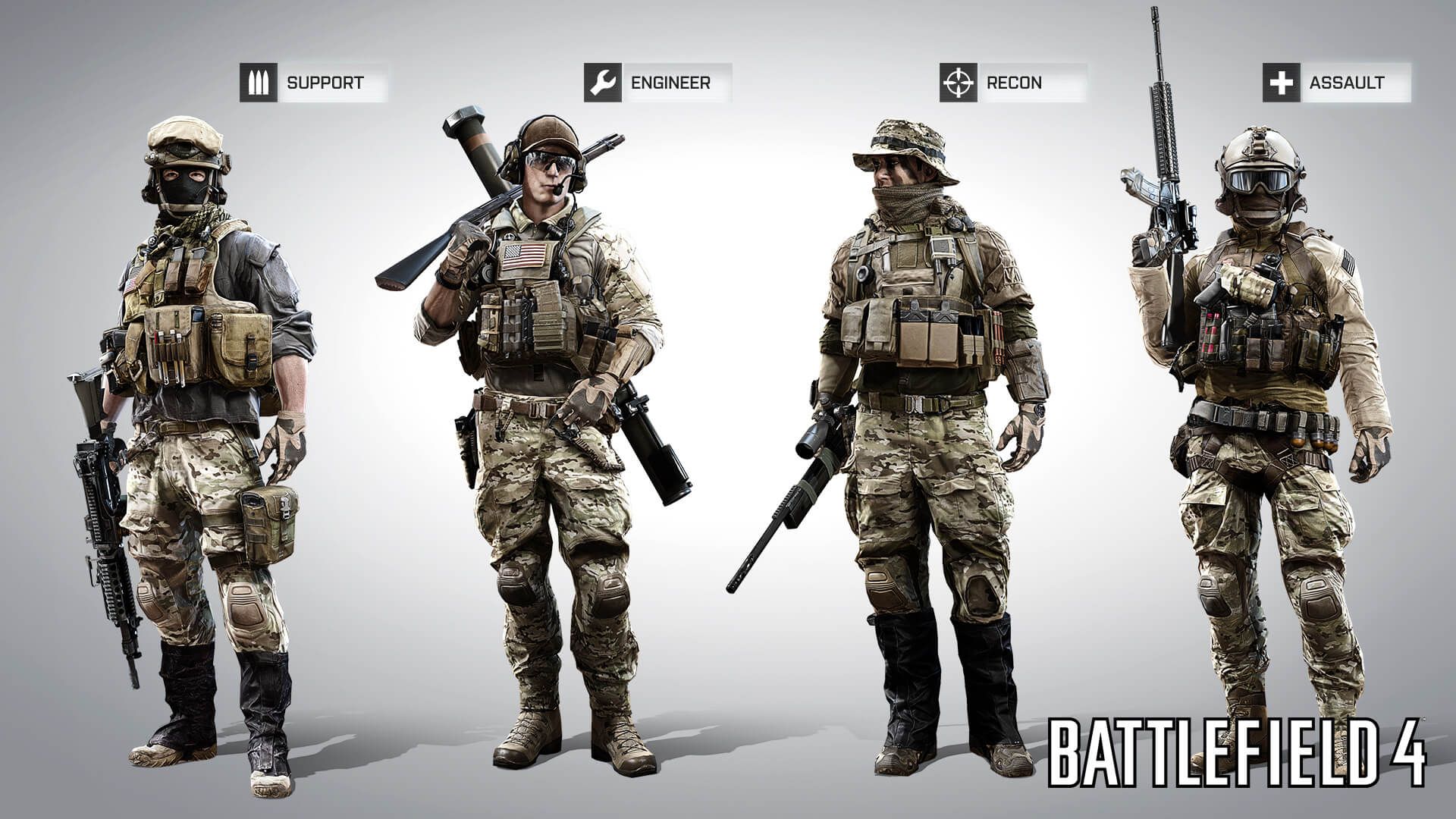This week - in an effort to prove that the summer video games lull is over - saw not only several review embargoes lift of high profile games, but it saw Activision and Infinity Ward unveil the multiplayer features of Call of Duty: Ghosts. As for its biggest competitor - DICE and Electronic Arts are doing their best to keep Battlefield 4 fresh in the media's mind.
EA announced that player stats earned on the PS3 and Xbox 360 will carry over to their next-gen counterparts, and they're continuing to detail its own revamped multiplayer features.
The second entry on DICE's "The Road to Battlefield 4" blog details how the sequel has evolved the four core playable multiplayer kits from Battlefield 3 and delves into how the Field Upgrades work for each type of player.
[gallery columns="1" link="file" ids="198596,198597,198598"]
- Map will dictate which two (of the three) armies will be playable.Recall: In Battlefield 3, it was always U.S. vs. Russia.
- Private servers and pick the two factions.
- Each kit has more options to give players additional sub-roles
- Engineers have more anti-vehicle options and vehicle damage, disables and destruction has been altered from BF3 to support this. RPG-7V2, MBT LAW, FGM-172 SRAW are confirmed weapons.
- Support bring back C4 and Claymores, and can use DMRs and Carbines. They also now have remote mortars.
- Recon brings back MAV, T-UGS, Motion Sensor and Radio Beacons from BF3 but also get back Spec Ops gameplay, and can use Carbines and C4 to play close-up and dangerous.
- Assault is the least changed kit but it does now have a First Aid Pack to heal a soldier over time along with Flash Bangs.
- Major goal is to keep players moving and involved, so now there are mobile healing/ammo repleshment (but limited to one target) in addition to the classic dropping of stationay First Aid and Ammo Boxes. There's also a mobile version of the automatic and long-to-setup SOFLAM, called the Portable Laser Designator for recon units behind enemy lines to paint targets for the team.
- Suppression fire is boosted for support players giving the big LMGs more effectiveness, while the effects are reduced for other weapons, especially in close quarters combat.
As for Field Upgrades, which we touched on earlier this week as the key incentive for encouraging players to play as a team. DICE has detailed how the progression paths work. Where BF3 had 7 specializations for players to choose from and it was up to the members of a four-person squad to choose ones that compliment each other, in BF4 there are over 25.
How does it work? There are four upgrade paths to choose from for each of the four kits and players progress by being a good team player, following orders, dropping health, ammo, etc. (read more here). Two of these four are the same for every kit - universal upgrade paths for offense (Sprint -> More Ammo -> More Grenaders -> Reduced Fall Damage) and defense (Armor -> Cover -> Flak -> Quick Regen).
The other two upgrade paths are specific to the kit and help define the player's role. Only one can be 'on' at a time but between spawns, players can select the other without losing any progress - it carries between the two. Assault players can focus on being a medic or a grenadier for example, while Engineers can focus on repair or anti-tank.
There's one additional universal path that'll be accessible to all four kits and what it includes will depend on the community.
- Shockwave: AMMO>ARMOR>GRENADES>SUPPRESSION
- Survivor: REDUCED FALL>AMMO>QUICK REGEN>COVER
- Shadow: QUICK UNSPOT>SPRINT>REDUCED FALL>STEALTH
- Hunter: ADVANCED SPOT>SPRINT>AMMO>GRENADES
Which would you pick? I'm a fan of the Shadow myself. You can vote on it and look at the effects of all of the specializations on the Battelfield 4 blog entry here.
Battlefield 4 releases October 29, 2013 for the PS3, Xbox 360, and PC. PS4 and Xbox One release dates have not been announced.
Follow Rob on Twitter @rob_keyes.
Source: EA

